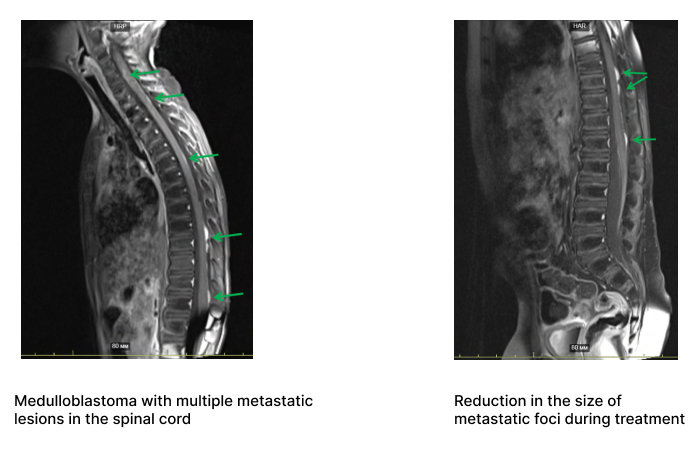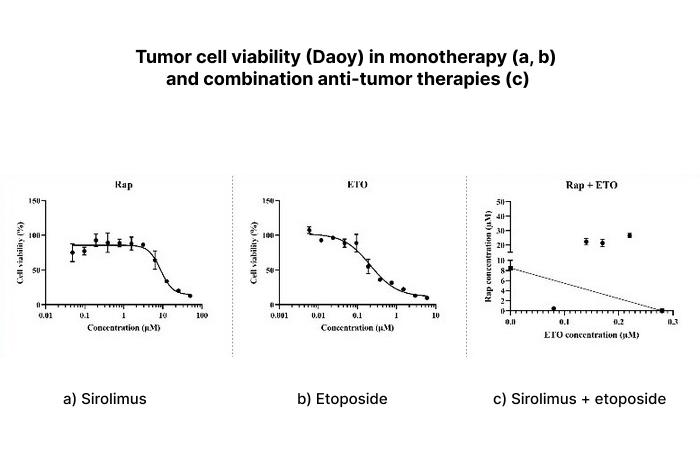
New perspectives in the treatment of relapsed CNS tumors in children
Medulloblastoma (MB) is a common and highly malignant tumor of the central nervous system in children. Chemotherapy has long been the mainstay of treatment for patients with medulloblastoma, but 20-30% of patients develop a relapse. The amount of previous highly toxic therapy is often a limiting factor in the use of intensive treatment regimens, so doctors and scientists around the world are searching for the most effective and safest drug therapy regimens.
The first clinical results on the efficacy of metronomic chemotherapy with mTOR inhibitors (sirolimus) in pediatric patients with embryonal tumors of the central nervous system (such as medulloblastoma) have been obtained at the WCRC for Personalized Medicine. A feature of this regimen is the administration of low doses of the drug without interrupting treatment. It is believed that this approach not only reduces treatment toxicity but also blocks tumor growth. The ability to induce an anti-tumor immune response is also thought to be an additional effect of the metronomic regimen.
The satisfactory toxicity profile of the therapy (significantly fewer complications compared to standard chemotherapy regimens), the possibility of outpatient treatment and the absence of age contraindications (possibility of use in very young patients) should be noted.
As a clinical example, we can present a case of prolonged progression-free survival in a child with a relapsed metastatic medulloblastoma in the course of prolonged metronomic chemotherapy combined with an mTOR inhibitor (see figure).

The effectiveness of the presented anti-tumor therapy regimen is based on the results of in vitro experiments on the medulloblastoma DAOY model cell culture, which demonstrated the presence of a pronounced sensitization of low doses of a number of anticancer drugs (etoposide, topotecan) to the action of sirolimus. Thus, the WCRC scientists found that one drug enhances the efficacy of another without the need for high doses. This raises the prospect of using such regimens in refractory and relapsed forms.

Every cell in the human body will go through its own life cycle. Intracellular signaling pathways play an important role. These pathways determine whether the cell is programmed to die (apoptosis) or, if this pathway is disrupted, whether it begins to divide uncontrollably, leading to tumor growth. An example of the fact that medulloblastoma has many molecular subtypes associated with different variants of these pathways is the SHH pathway (named after the character Sonic the Hedgehog). This is important because the pathogenesis of the disease (the most important pathway for a particular tumor variant) will also be fundamental to the choice of treatment tactics. Studies carried out by the researchers of the WCRC Research Laboratory of Pediatric Neuro-Immuno-Oncology suggest that the developed treatment scheme will have the greatest effect on medulloblastoma of group SHH and group 4, which is determined by the high role of the PI3K/AKT/mTOR pathway in the pathogenesis. The data underscore the importance of molecular genetic profiling of tumor tissue for personalizing anti-cancer therapy and provide hope that patients will recover with a good quality of life after treatment.
16.10.2023
